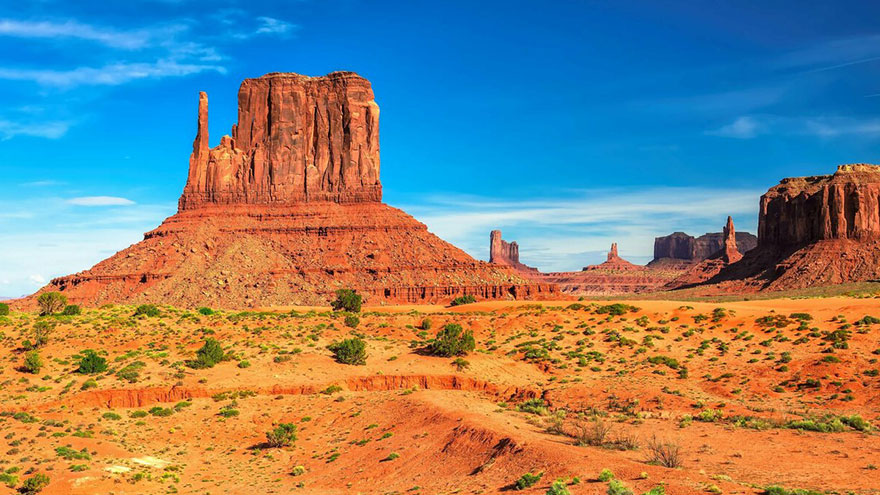The Temperature in the White Mountains in Arizona
The end of July brings the hottest weather of the summer across most of the U.S. Vacationers flock to mountain lakes and forests to escape sweltering temperatures in low-lying cities. The same holds true in Arizona, with a favorite getaway region in the pristine forests and sparkling lakes of the White Mountains in the eastern portion of the state.
The Apache-Sitgreaves Forest, White Mountain Apache Indian Reservation and mountain towns provide campgrounds, cabins and comfortable accommodations to suit your needs for a late July vacation.

Elevation Range
The White Mountains are the second highest mountain range in Arizona, with the high elevations contributing to desirable cool temperatures at the end of July. The temperatures you’ll find in the White Mountains vary greatly depending on the elevation.
Baldy Peak is the second highest in the state, with an elevation of 11,490 feet. St. John’s is at an elevation of less than 6,000 feet, and you’ll find some of the warmest temperatures in the White Mountains in that city. The most visited areas in the White Mountains include the towns of Greer, Heber-Overgard and Springerville-Eagar, which lie at elevations ranging from 6,500 to 8,500 feet.
Average Daytime Temperature
By late July, daytime temperatures are the warmest of the year. In St. John’s, the average daytime temperature in late July tops 90 degrees Fahrenheit, with an extreme temperature of 107 being recorded on July 18, 2005. At 8,500 feet above sea level, Greer averages 75-degree highs in July.
If you are taking a hike up Mount Baldy, prepare for temperatures 20-to-30 degrees cooler than the predicted high for Greer. The trail tops out at 11,200 feet, with access to the peak being reserved solely for members of the Apache Tribe because the tribe considers it sacred.
Average Nighttime Temperatures
You’ll want to bring warm gear if you’re planning on camping or being outdoors at night. While temperatures generally remain in the lower 60s at night at St. John’s, temperatures below 50 degrees have been recorded in the area. Greer regularly dips below 50 degrees on a summer night in late July,
often reaching the mid-40s. Expect nighttime temperatures between 50 and 60 degrees when overnighting in Pinetop-Lakeside or Springerville-Eagar. Temperatures usually fall to their lowest just before dawn, so if you’re setting out on an early morning hike or fishing trip, dress in layers you can shed as the day heats up.
Temperature Variables
Late July usually brings summer monsoons to the White Mountains. Towering thunderheads build in early afternoon, bringing lightning, wind and heavy rainfall by late afternoon. Temperatures can drop dramatically — by as much as 30 degrees — within a matter of minutes.
Always pack a lightweight fleece jacket and some rain gear to stay dry if you will be engaging in outdoor activities. Plan to be off open ridges and lakes before storms approach to avoid being struck by lightning.

